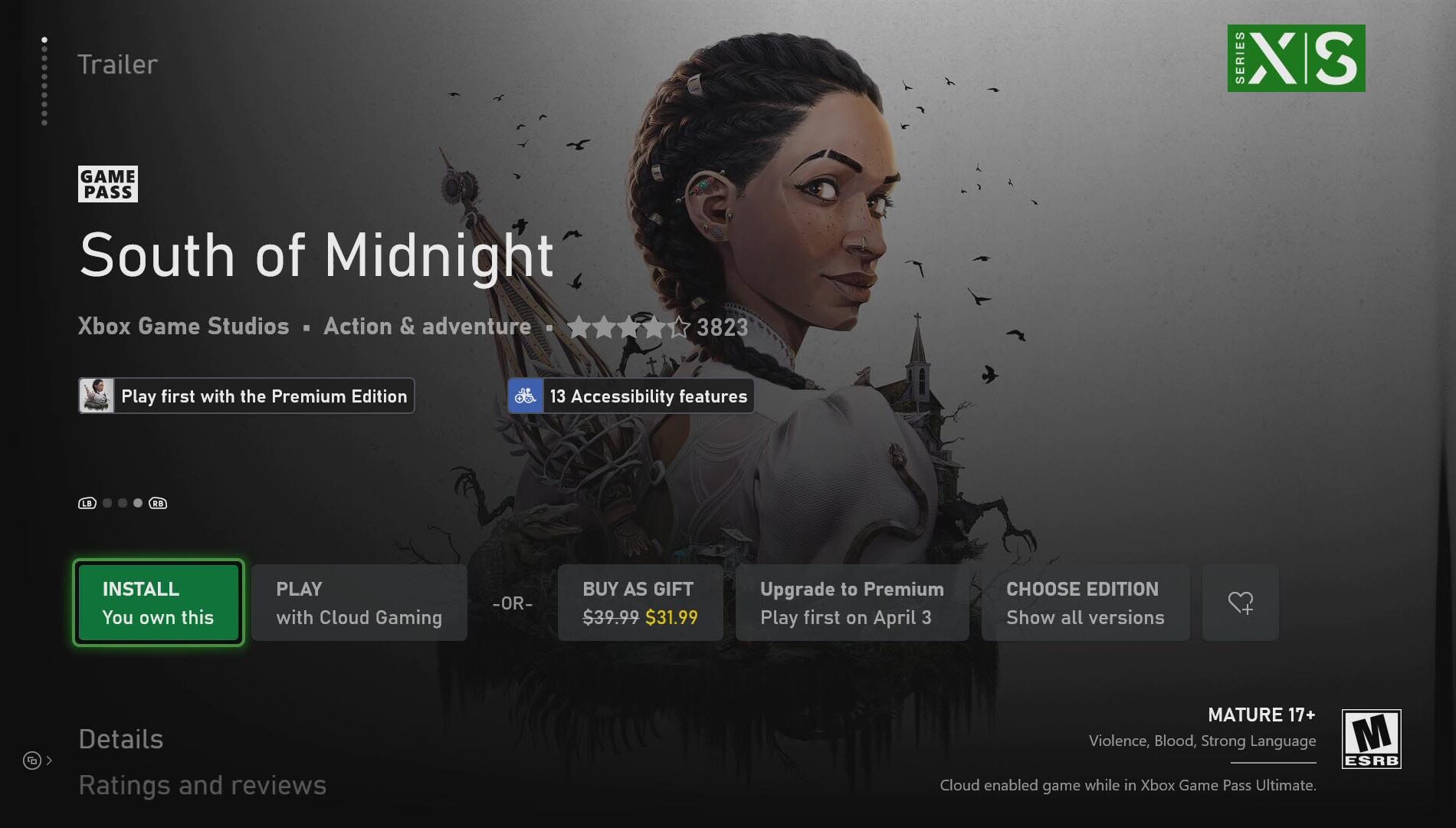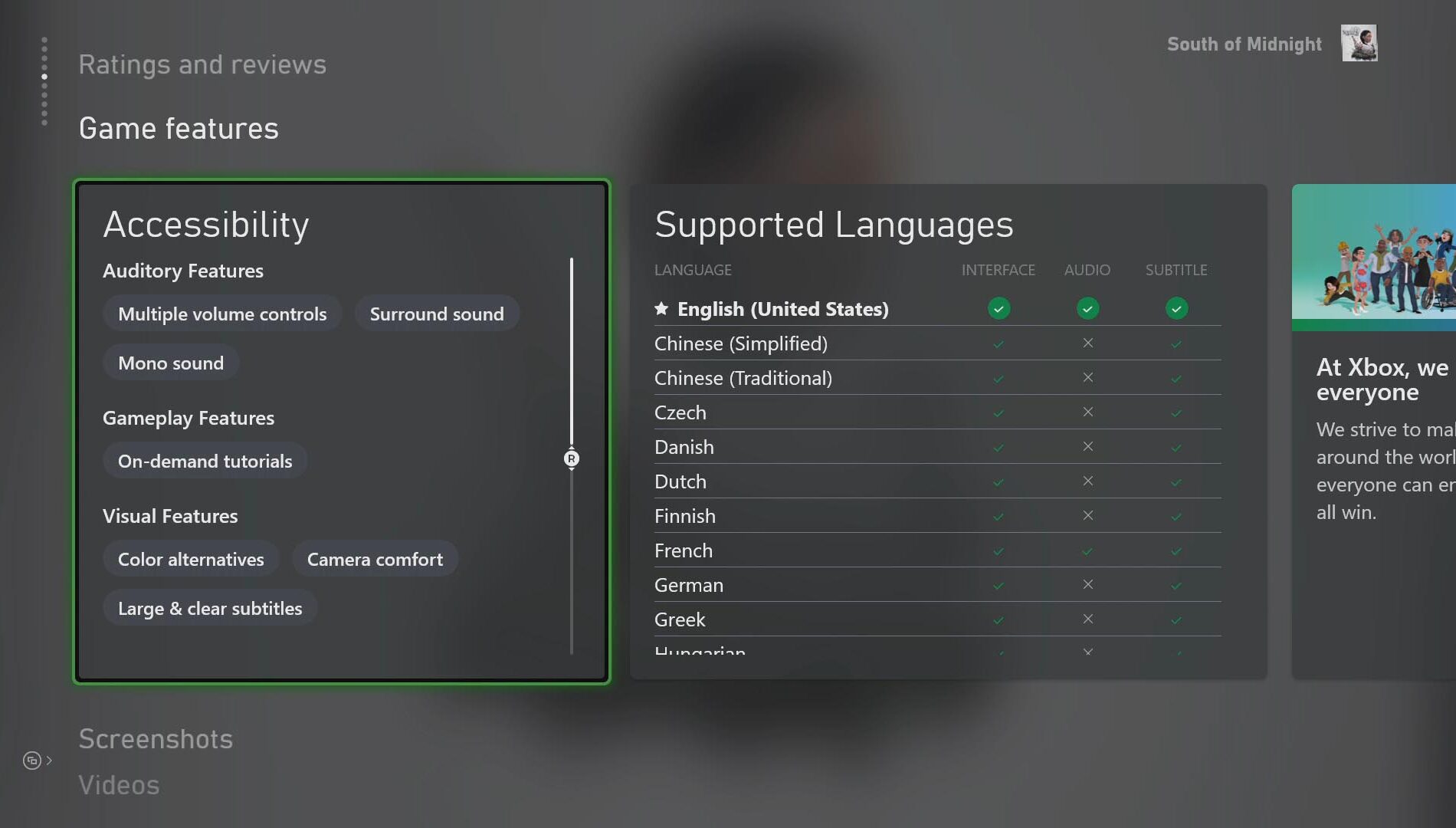Accessible Games Initiative Tags Now Available Across All Digital Xbox Experiences
Summary
- Accessible Games Initiative tags are now available across all digital Xbox experiences.
- The tags are an industry-wide push to help players identify the accessibility features available in a specific game, before they make a purchase.
- Read on for an interview with Xbox’s Brannon Zahand and accessibility advocate Steve Saylor to learn more.
Today, just in time for Disability Pride Month, Xbox is proud to announce that the new Accessible Games Initiative tags, designed to provide players with clear and consistent information about the accessibility features in video games, are now available across all digital Xbox experiences including console, PC, mobile, and web storefronts.

Created in collaboration with the Entertainment Software Association (ESA), Electronic Arts, Google, Nintendo of America, Ubisoft and other gaming companies as part of the newly formed Accessible Games Initiative, the Accessible Games Initiative tags help the more than 429 million players with some form of disability identify the accessibility features available in a specific game, before they make a purchase.
This transition to the new Accessible Games Initiative tags is a continuation of the work Xbox started in 2021 by releasing the Xbox Game Accessibility Feature tags. Any Xbox Game Accessibility Feature tags that do not have equivalent Accessible Games Initiative tags will remain on our platform. This new combination of tags will make it even easier for players with disabilities to learn about available accessibility features and find their next great game.

We caught up with Brannon Zahand, Senior Technical Program Manager at Xbox, and Steve Saylor, content creator and gaming accessibility advocate, to discuss the work towards greater standardization of accessibility in games, what these tags mean for players today, and why this work is important.
You can also head over to the Microsoft Game Developer Blog to check out an interview with Phil Crabtree, Technical Director & Co-founder of Kaizen Game Works, about his team’s work designing games with accessibility in mind and the importance of the Accessibility Game Initiative tags.
Interview with Brannon Zahand, Senior Technical Program Manager at Xbox, and Steve Saylor, Content Creator and Gaming Accessibility Advocate
Today’s a big day! What does it mean to you, on a personal level, to have the new Accessible Games Initiative tags available across all digital Xbox experiences?
Brannon Zahand: This work has been over half a decade in the making, so finally seeing these new tags in our store experiences is incredibly exciting. And it’s been amazing to see not just the positive community sentiment, but the rapid adoption we’ve had from game developers.
Steve Saylor: I’m very excited! As more and more accessible games are being released, being able to find them via tags that cater to my accessibility needs is fantastic. I’ll be able to find my next favourite game or find that rare gem that I would’ve missed.
Where exactly can players find these new tags, and will the Xbox Game Accessibility Feature Tags still be available?
Zahand: On console, these tags can be found in many places, including the Xbox Store and filters in “My Games & Apps.” They are also available in the Xbox PC app, Xbox Mobile app, as well as on Xbox.com. In total, players will find more than 4,000 tags across all these experiences, which we’re really proud of. As for the original Xbox Game Accessibility Tags, we kept the tags which didn’t have Accessible Games Initiative equivalents as we heard from the community that they still found these very helpful. Those tags are “Accessibility on launch,” “On-demand tutorials,” “Pausable,” “Adjustable input sensitivity,” and “Single stick gameplay.”
Why are these new tags being introduced, when Xbox already had its own tagging system?
Zahand: Obviously, we love our Xbox Game Accessibility Tags. Developers and consumers alike both told us they gained a lot of value from them. But, at Xbox, we really view accessibility through the lens of collaboration, not competition. We realized we can do more good for our community and the developers that support them if we can align with other industry leaders to create a consistent language for developers to share information about what accessibility features their games have, regardless of platform or storefront. It reduces the amount of effort developers have to make to try to support different tagging systems, and makes it easier for the community by reducing the number of tagging systems they have to learn.
As a founding member of the Accessible Games Initiative, what was it like to work with not only the ESA, but other industry partners, on these tags?
Zahand: It was such an amazing experience. There are so many passionate accessibility experts and advocates in our industry now, and having the opportunity to tackle such a transformative initiative with them was so rewarding. My sincere thanks go out to each and every one of them for all the effort they poured into making the Accessible Games Initiative a reality.
The Accessible Games Initiative marks a significant step in the standardization of accessibility in video games. Why is this important?
Zahand: For years, people spoke about accessibility using similar terms but with very different meanings and expectations. For example, a long time back, I remember seeing a game that advertised itself as having subtitles. I was excited to try it out until I realized the subtitles were white text… and a decent chunk of the game was played in a snowy environment. There were points where it was impossible to read the text. Now, I was fortunate that I didn’t need the subtitles; for me, they were a “nice to have.” But I can imagine that those who rely on subtitles, like players in from the d/Deaf and hard-of-hearing community, were likely frustrated by this. With these new tags, individuals buying a game tagged with “Large & Clear Subtitles” can be certain that the subtitles will have an adjustable background ensuring they’ll be able to read text regardless of the game environment in the background. And if you think about it, this makes it easier for game developers as well. It gives them a clear place to start when they think about what types of accessibility features they may want to implement and the “minimum bars” that make those features useful and enjoyable.
Saylor: It’s important because right now accessibility information about a game is rare. We get some info here and there, but we often won’t know if a game is accessible until we buy it and play it ourselves. With these tags it’s a great step forward for the industry to at least have a baseline of information so we can make our purchasing decisions wisely.
What do you hope these tags signal to the rest of the industry?
Zahand: I hope these tags are a reminder to developers, publishers, and consumers alike that accessibility is a win-win. Accessible games are good for everyone. For gamers, they give those who need these features an opportunity to take part, and those who simply enjoy customizing their gaming experience more options to do so. For developers, it allows their art to be enjoyed by more people. And since the use of these tags and implementation of these features isn’t mandatory, it gives them the freedom to do what they think is best for their game and players.
Saylor: I hope it’s a signal to the industry that accessibility is not a daunting thing. Yes, it can be a lot of work. But, instead of being a mysterious thing, developers can look at the tags and say, “Oh that’s how you do it? That can totally be done.” It’s not the whole picture but it at least sets a standard going forward.

If I am a game developer hearing about these tags for the first time, how can I get involved?
Zahand: For Xbox developers, I’d recommend checking out our developer documentation on both the Accessible Games Initiative tags and Xbox Accessibility Feature Tags at https://aka.ms/afts. And for those developing on other platforms, a great place to get started is the Accessible Games Initiative website at https://www.accessiblegames.com.
Finally, are there any games that have surprised and delighted you with their accessibility options, and how are those represented in the new AGI tags?
Zahand: It’s amazing to see how many titles have adopted these tags since they became available. I was really happy to see that Indiana Jones and the Great Circle, South of Midnight, and Doom: The Dark Ages all implemented some great accessibility features, including features covered by both the Accessible Games Initiative tags and Xbox Accessibility Feature tags.
Saylor: A game that surprised me the most this year was Atomfall. Not only is it a great game to play on Game Pass, but it has a large amount of accessibility that made it so much fun to play. It has multiple tags already that include Clear and Large Text, Large and Clear Subtitles, Playable with Keyboard, or Touch controls, and more. I definitely recommend giving it a try!
Visit www.accessiblegames.com to explore the tags and learn more.
.post-template-default .xwsrc-block-content-block .wp-block-column.flex-basis-50.push–25.column–content {
flex: 100%;
margin-left: 0;
}
The post Accessible Games Initiative Tags Now Available Across All Digital Xbox Experiences appeared first on Xbox Wire.


